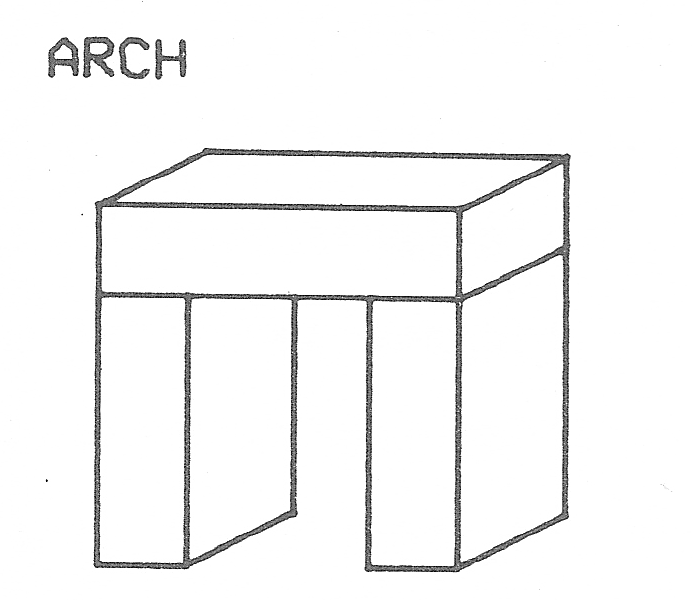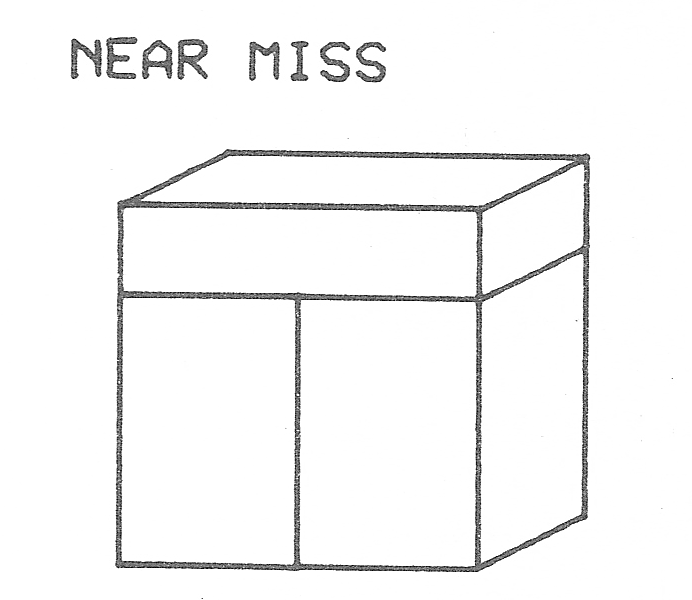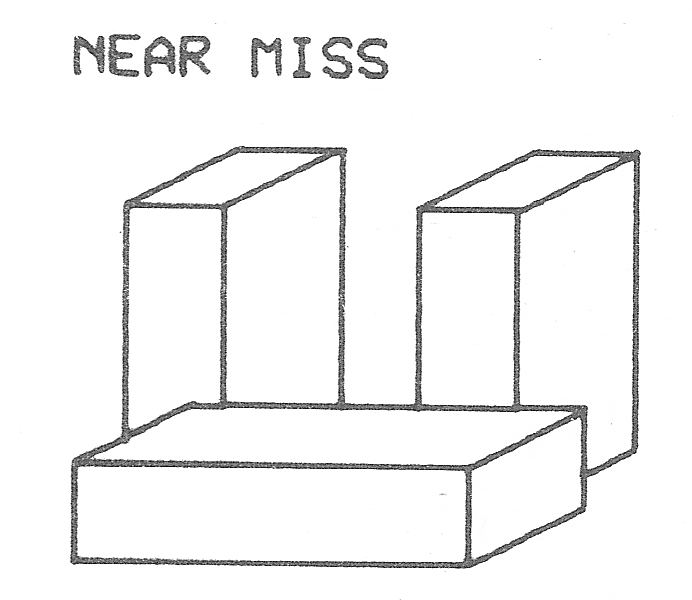Patrick H. Winston
WINSTON: Learning by Example [note 1]
The interaction prohibition of multiple word meanings is an argument why the separation of microworlds is necessary. It is also the most pervasive and natural example I know of that hypothetical process in concept formation advanced by Winston,[note 2] the substitution of emphatic forms for particular descriptions. Let me elaborate. Winston offers a perspective on how learning proceeds through the interactions of descriptions of particular experiences. The process begins with a prototype to which a label is applied, e. g. Arch. Winston imputes to a mind the construction of a description such as this:

Let us call this object description an UR-CONCEPT. Such a description is transformed to a concept as follows. When confronted with this second example below and informed that it is similar to but different from an Arch, the particular description “does-not-touch” is changed to the emphatic form “must-not-touch,” thus:

A third example, another “near-miss,” is shown below; and the description term “is-supported-by” is modified to “must-be-supported-by”:

The initial description is one of an object; the last is one of a concept. The change from one to the other is defined as substituting a proscription or prescription for a description. In Winston’s words:
…I want to make clear a distinction between a description of a particular scene and a model of a concept. A model is like an ordinary description in that it carries information about the various parts of a configuration, but a model is more in that it exhibits and indicates those relations and properties that must and must not be in evidence in any example of the concept involved. (p. 185)
The language-capable mind receives significant culturally given guidance through the necessity of applying abstract names to varieties of entities in particular experiences. That is, the nominal confusions derived from abstract nomenclature provide exactly the kind of focus needed for learning concepts based on the modification of descriptions. Further, the embedding of labelled slots in descriptions constructed through specific experience of the application of the label in varied contexts constrains to a manageable number the possible hypotheses of a generalized concept through the requirement that those hypotheses be coherent with the existing microworld perspectives.
In contrast with Winston’s focus on learning through a prototype and a series of acceptable variants and “near-misses,” the description of knowledge as disparate microworlds of thought focusses on “far-misses”; for example, on ANGLE encountered in SHOOT and ANGLE encountered in MPOLY. Good numbers for one world are rarely good for the other. In effect, the different worlds where the same name would be culturally assigned as a slot label must not relate lest confusion result. But paradoxically, the commitment of the language to a common label argues that there exists some perspective within which the label used in these disparate worlds constructed from experience can be seen as THE name for a generalized and unified concept.
The importance of not relating is profound. Winston, focussing on a crisp formulation of learning through near-misses, did not mark the asymmetry of the emphatic and negative emphatic forms. In particular, a MUST-NOT-CONFOUND link between two descriptions distinguishes two entities from each other without the necessity of specifying a relation based on some common abstracted character. This is important in avoiding logical complications. But more important is the illumination the negative emphatic form brings to the question of microworld boundaries. It is sufficient for the separation of microworlds that all slots which are potentially confusable be blocked by MUST-NOT-CONFOUND links. Such refinement is surely a powerful tool for controlling confusion in exquisitely articulated microworlds of knowledge.
